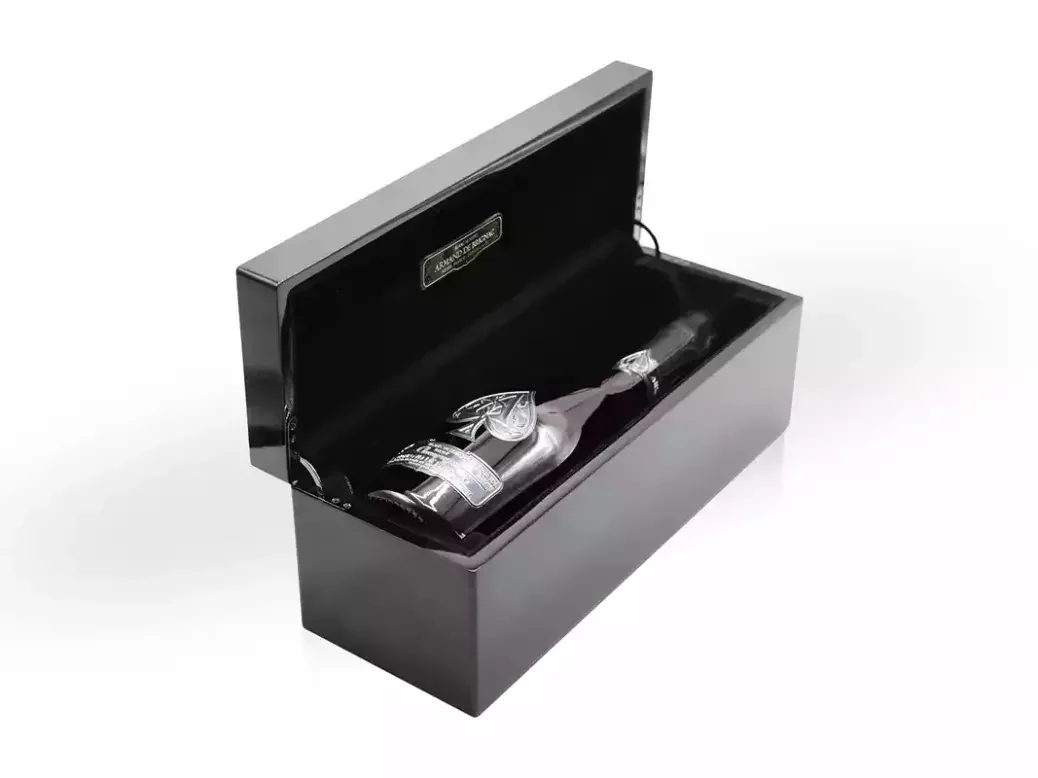
In a range otherwise defined by a quest for consistency, Armand de Brignac Blanc de Noirs Assemblage No.4 is gloriously experimental, says Joanna Simon.
If someone is paying in excess of £1,000 for a bottle of the latest cuvée of a Champagne, you might expect them to be surprised to hear that the Champagne in question is all about trial and error. But trial and error were the words used not once but twice by the brand ambassador for Armand de Brignac as we tasted the Assemblage Blanc de Noirs No.4 a few days ahead of its global release.
When I thought about it a little more, however, I realized that the people who buy Armand de Brignac—any of the current five cuvées—are not average Champagne drinkers, aficionados, or connoisseurs. It’s not only their ability and desire to pay the sums required that sets them apart, but their wish, one assumes, to associate themselves with the rapper Jay-Z (he retains 50 percent of the brand after selling the other half to LVMH in 2021) and their liking (again, making an assumption) for showy, metalized bottles with polished pewter labels complete with ace-of-spades emblem.
This is not to suggest that they do not appreciate good Champagne—these are, after all, very high-quality Champagnes, made by the Cattier family—but the minutiae of village and cru, the proportion of each component vintage, number of years on lees, and so on are unlikely to be high on the chat list of drinkers in nightclubs, where the brand has mostly been sold (although there is now some repositioning going on toward high-end retail and restaurants).
Even so, trial and error is slightly surprising because, for the other cuvées—Brut Gold (80 percent of production), Blanc de Blancs, Rosé, and Demi Sec (the one that is less good than the others)—the focus of the winemaking team is on consistency of style. Components vary in order that each successive blend be like its predecessor.
Armand de Brignac: Developments and fundamentals
Not so the Blanc de Noirs, which is said to be all about innovation, trial and error, and “how can we improve?” There are two significant developments for the new Assemblage—and both are firsts for the brand, not just for this fourth Blanc de Noirs: No.4 was aged on its lees for seven years, which is longer than any previous cuvée. (No.3 was six years, numbers 1 and 2 were five, Brut Gold is three years, and Blanc de Blancs is five.) And for the first time, some of the fruit came from the Aube, from the village of Ville-sur-Arce, so that the Blancs de Noirs is no longer all grand or premier cru.
Another development is the number of bottles produced: 7,328. This is more than double the previous number and well over three times the total for No.2. When I asked if the growth would continue, I was told that they didn’t comment on production figures.
Things that remain the same are the essential three-vintage blend of a base wine and two reserves, as for all Armand de Brignac; 100 percent Pinot Noir; tête de cuvée only; fermentation in stainless steel and some concrete; wine for the dosage aged in new barriques; a dosage of 8g/l; and the disgorgement date stated on the label, the only style for which it is given.
As for the range as a whole, that apparently isn’t remaining the same. When I asked about range extensions, I was surprised to be told by the vice president of communications that they’re always working on the range and that there will be an exciting launch next year. You read it here first.
Tasting
Armand de Brignac Blanc de Noirs Assemblage No.4
100% Pinot Noir; 75% 2015, 15% 2014, 10% 2013; from Verzy, Verzenay, Ludes, Chigny-les-Roses (where Cattier and its 33ha [82 acres] of vines are based), Rilly-La-Montagne, Mailly, and Ville-sur-Arce; disgorged on April 20, 2023; dosage 7g/l.
After a nose bursting with fruit—black fig, cassis, and ripe red apple—the palate comes as a bit of surprise. It’s drier, tenser, more vinous, and more incisive and chiseled than the fruity aromas seemed to promise. It holds the fruit tightly, wrapping it in lime-zest acidity and orange. The impression is one of compressed power and unrevealed layers. And so it proves. Gradually it becomes more expansive, revealing spices and airy, delicate, buttery brioche—and a texture that relaxes into plush creaminess only to be reined in again at the end by the acidity. The dosage is pitch perfect, and the finish is long and mouthwateringly fresh. 96






